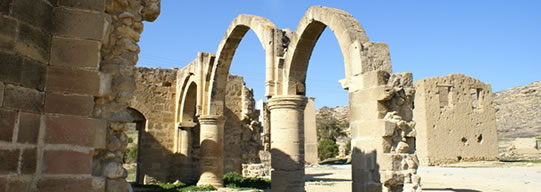
The advantages of Larnaca as a tourist resort are numerous. The town is large enough to give everything one may need but still is not overcrowded especially at its beautiful beaches which extend for 25 km (16 mi). The archaeological sites and its six museums are in the center of the city within walking distance. Summer sports, sea activities and cruises are readily available. The shops are well stocked, medical care is excellent, its cinemas are screening films simultaneously with the cinemas of Europe and the USA . The variety of restaurants, tavernas, cafeterias and bars is very great. The Cyprus “meze” is the food specialty of the town. Night life is interesting and security in the streets unsurpassed. Cultural life is rich and many events are organized by the town’s Municipality almost daily.
Because of the mild climate in the winter and the genuine hospitality of the local people, Larnaca enjoys tourism at very high occupancy rates all the year round. Larnaca with its wider area has 9,500 hotel beds, about 10% of the total all island tourist capacity. Along the Larnaca bay there are luxurious beach hotels as also hotel apartments or holiday apartments of very high standards a prices generally lower from the rest of the island. Larnaca being in the center of the country is the ideal base for exploring the rest of Cyprus. Its international airport lies a few kilometers from the center of the town and still the town is completely outside the cone of landing and departing aircraft.
The most important site of Larnaca are the ruins of Ancient Kitium. The earliest architectural remains date back to the 13th century B.C . the area was rebuilt by Achaean Greeks. The remains of the Cyclopean Walls, made of giant blocks and the complex of the five temples, are particularly interesting.
Another place of interest is the Marable Bust of Zeno, which stands at the crossroads near the American Academy. Zeno was born in Kition (ancient Larnaka) in 326 B.C. . After studying philosophy in Athens he founded the famous Stoic school or philosophy.
Near Larnaka International Airport there is the Larnaca Salt Lake . It fills with water during the winter and is visited by flocks of flamingoes who stay here from November till the end of March. It dries up in the summer. It used to yield a good quality of salt which was is scraped from its dried up surface.The salt from this lake is now considered unfit for human consumption.
About half – way between the monument of Zeno and Salt Lake on the right, there is the underground chapel of Ayia Phaneromeni. It is a rock cavern with two chambers. The structure suggests that it once was a pagan tomb, possibly dating back to Phoenician times. The place is credited with various magical properties: thus those who suffer from headaches or other diseases walk three times round it and leave a piece of clothing or a tuft of their hair on the grill in front of the south window. It is also much frequented by girls, whose lovers are overseas, who come here to pray for their safety.
The Church of Lazarus is another magnificent Orthodox Church in Larnaca which was built in the town over the tomb of St. Lazarus , the brother of Mary and Martha . He died here and was buried in the church named after him. In 890 A.D. his tomb was found bearing the inscription “Lazarus the friend of Christ”. The marble sarcophagus can be seen inside the church under the Holy of Holies.
The Hala Sultan Tekke is about 5 km (3 mi) west of Larnaka, on the banks of the Salt Lake. It is equivalent to the Christian “monastery”. Within the precincts of this Tekke is the tomb of Umm Haram, said to be the foster mother of Mohammed . According to Moslem tradition Umm Haram died on this spot in 647 A.D. while accompanying the Arab invaders. She was buried here and later the Ottomans built the present mosque in her honour.
Another site of interest is the Fort of Larnaca which was erected by the Turks in 1625 . This fort is now a museum and its inner courtyard is used as an open air garden – theatre during the summer months, by kind permission of the director of antiquities.
The Old Aqueduct known as “The Kamares”, stands outside the town on the way to Limassol. It was built in Roman style in 1745 to carry water from a source about 6 miles south of Larnaka into the town. The aqueduct is illuminated at night.
Source: en.wikipedia.org
Sponsored by: Larnaca Hotel



